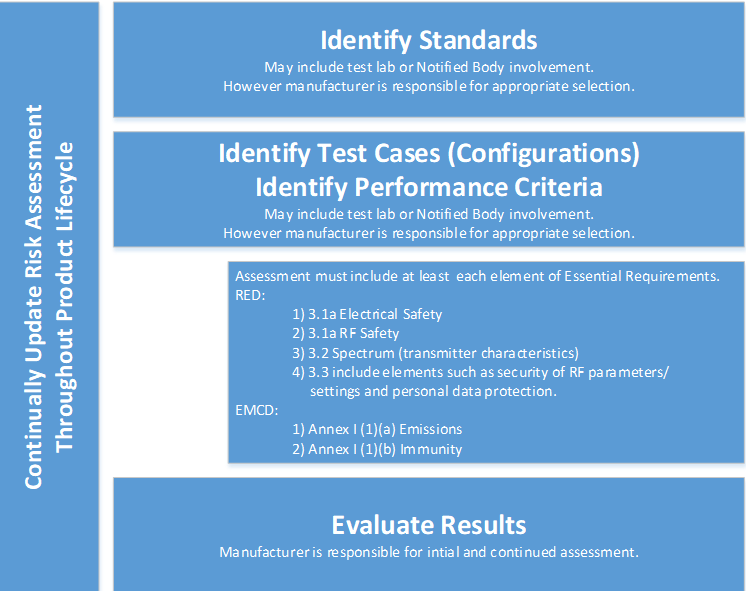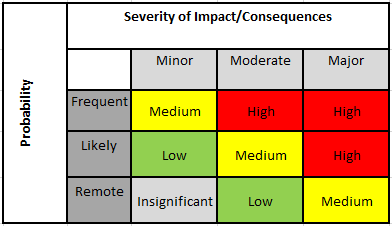
Navigating Compliance: Understanding the EMCD/RED Approval Pathway in the European Union and the UK
The European Union (EU) and the United Kingdom (UK) have established rigorous regulatory frameworks for electronic products. This article addresses particular requirements for EU ElectroMagnetic Compatibility Directive (EMCD 2014/30/EU) and EU Radio Equipment Directive (RED 2014/53/EU); and the corresponding requirements in the UK known as the ElectroMagnetic Compatibility Regulation (EMCR SI/2016/1091) and Radio Equipment Regulation (RER SI/2017/1206). Manufacturers must adhere to specific approval pathways and compliance assessments to ensure their products meet the necessary standards. This article provides an overview of the EMC and Radio Equipoment approval pathways, associated assessments, and the role of Notified Bodies in ensuring conformity.
EMC/Radio Approval Pathway:
The approval pathway for electronic products involves the Manufacturer’s Declaration of Conformity Procedure.Manufacturers can voluntarily opt for Notified Body Type Examination Certificate (TEC) approval in all instances. For non-radio equipment subject to EMC requirements, the Manufacturer’s Declaration of Conformity Procedure is typically sufficient, but voluntary Notified Body TEC approval remains an option. For Radio Equipment where the assessment for access to radio spectrum (Article 3.2) does not apply a harmonized standard in full requires Notified Body TEC approval.
Assessment Requirements:
Under CE Marking and UKCA Marking framework for EMCD and Radio Equipment, there is no formal product registration process. However, manufacturers must conduct the following assessments based on the type of equipment:
Non-Radio Equipment:
- Safety Assessment
- EMC/EMI Assessment
Radio Equipment:
- Safety Assessment
- RF Exposure Assessment
- EMC/EMI Assessment
- Radio Characteristics (Notified Body Type Examination required if harmonized standards are not fully applied)
Additional Requirements:
Apart from the core assessments, a risk assessment is mandatory for both EMCD and RED, even when utilizing the Declaration of Conformity pathway without Notified Body review. Depending on the product type, other requirements including, but not limited to: general product safety, RoHS compliance, waste/recycling considerations, energy efficiency, Medical Device Regulation, Automotive or Machinery requirements may apply.
Notified Body Type Examination Checklist:
For products requiring Notified Body approval, the following checklist is essential:
- Application Form
- Cover Letters (if needed)
- Declaration of Conformity (DoC) Draft Copy
- External Photos
- ID Label and Placement
- Internal Photos
- Block Diagram
- Test Reports
- User Manual
For Radio Products, the Following Additional Documents Are Required:
- Operational Description
- Include brief description of product
- Include description of parts of block diagram
- Include any necessary discussion related to compliance with requirements
- Include description of personal data security
- Include description of security of RF related software / firmware
- Circuit Diagram (Schematics)
- Bill of Materials (BOM)/Parts List
- PCB Layout Showing Component Placement
- Photo or Drawing of Packaging Showing National Restrictions (If any)
- User Manual Showing National Restrictions (If any)
- Information on Copy of DoC Provided to User
Compliance with these requirements ensures that electronic products meet the necessary standards for market placement, protecting consumers and maintaining the integrity of the EU and UK regulatory frameworks. Manufacturers should diligently follow the prescribed procedures and documentation to navigate the intricate landscape of EMCD and RED approvals successfully.
Comprehensive Insights into Risk Assessment for Regulatory Compliance
Ensuring compliance with applicable directives involves a meticulous risk assessment process that must encompass the essential requirements specified. The European Commission has explicitly emphasized that a mere declaration of adherence to harmonized standards is insufficient. Manufacturers are urged to conduct a thorough assessment that evaluates the likelihood of non-conformity or hazards in comparison to the potential risks to individuals or property.
If your company already utilizes a risk assessment mechanism, CKCCS recommends adjusting the contents to incorporate specific parameters related to the essential requirements. The document provided by the German Federal Network Agency, accessible here, offers valuable insights into these intricacies, courtesy of the German Federal Network Agency.
Example flow for risk assessment:

Please be aware that while the essential requirements are categorized above, the manufacturer’s risk assessment may introduce a more detailed analysis. For instance, specific risks, such as ESD, Radiated Immunity, or Surge, may be individually considered for immunity. Similarly, emissions may be assessed with granularity, taking into account factors like interference to other services, adjacent channel interference, or receiver performance.
It’s important to note that the risk assessment document should primarily focus on the legal use of the equipment. According to RED Article 3.1a for Low Voltage Electrical Safety, the risk assessment is mandated to incorporate the “reasonably foreseeable use” of the equipment, including (for example) RF Exposure for domestic animals. For all other aspects, it suffices to include the manufacturers’ declared intended use cases.
In certain scenarios, the risk assessment may also need to consider vulnerable persons, such as children or the elderly.
One possible example assessment type:

Other assessment types include Hazard Based Risk Analysis or Risk Scoring and Mitigation Analysis, among other equally viable methods. The manufacturer may choose a risk assessment method which best fits the manufacturers quality management system however the assessment method is required to suit the needs of the equipment to fulfill the essential requirements of the applicable directive(s) regulation(s).


